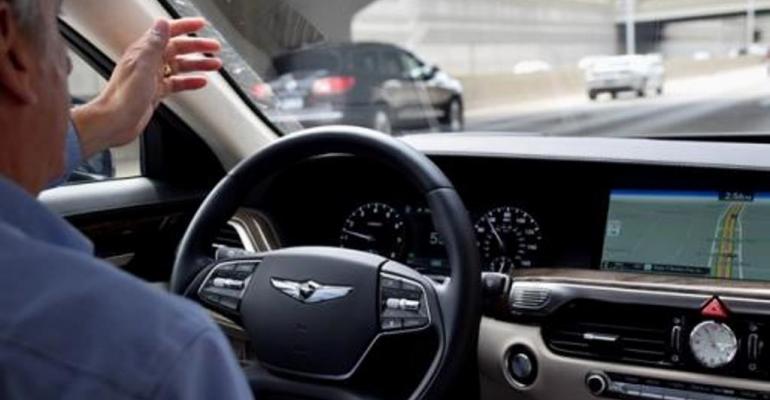Self-driving vehicles remain a mystery to lots of Americans. And despite the auto industry marching forward on the road to self-driving vehicle development, many people are fine with the way cars are now.
They believe current vehicles are safer than models with a higher level of autonomy, an irony considering a promoted benefit of tomorrow’s self-driving vehicles is that they are safer.
That’s according to a new study Kelley Blue Book commissioned and Vital Findings conducted on consumer perceptions and misconceptions of autonomous vehicles.
The survey identifies consumers torn between the need for safety and the desire for control, with 51% of respondents saying they prefer to have full control of their vehicle, even if it’s not as safe for other drivers.
Forty-nine percent prefer a safer roadway for all, even if that means relinquishing some driving control.
The Society of Automotive Engineers has set various levels of autonomous driving.
At one end are vehicles with systems such as adaptive cruise control and lane-keeping assistance, but require drivers to be ready to take control at any time. Such vehicles are on the road today.
At the other end are tomorrow’s vehicles in development stages today by automakers and suppliers. Those future vehicles would be self-drivers requiring no human interaction.
“The industry is talking a lot about self-driving vehicles these days, with multiple automakers and ride-share companies throwing their hats in the competition to build and release the first fully autonomous vehicle to consumers,” says Karl Brauer, senior analyst for Kelley Blue Book.
But he adds, “Much is still unknown about fully autonomous vehicles, including how they would react in emergency situations.”
Many Americans are interested in purchasing vehicles with current semi-autonomous features. But the survey says awareness of the higher levels of autonomy is limited, with 60% of respondents saying they know little or nothing about such vehicles.
For tentative buyers of today’s semi-autonomous vehicles, first-hand experience such as test drives, short-term leasing or daily rentals will be crucial when making future purchasing decisions, Brauer says, adding the industry “will need to address hesitant drivers.”
Not all Americans are hesitant about the technological future of their automobiles. Respondents in the tech-savvy Gen Z (12 to15 years old) age range are ready to leave the driving to the vehicle. Of course, no one in that group legally drives yet.
Forty-three percent of Gen Z respondents say they know a lot about autonomous vehicles compared with only 1% of their Baby Boomer elders.
Among all age groups, Gen Z are the most comfortable (73%) and feel the safest (79%) about the prospects of full vehicle autonomy. Older Millennials, who have actual purchasing power today, are not far behind, at 44% and 61%, respectively.
A majority of current luxury vehicle owners show more awareness of the higher levels of autonomy, according to the study.
A majority of those polled (63%) believe roadways would be safer if autonomous vehicles were standard; however, 37% think roadways are safer with vehicles operated by people.





